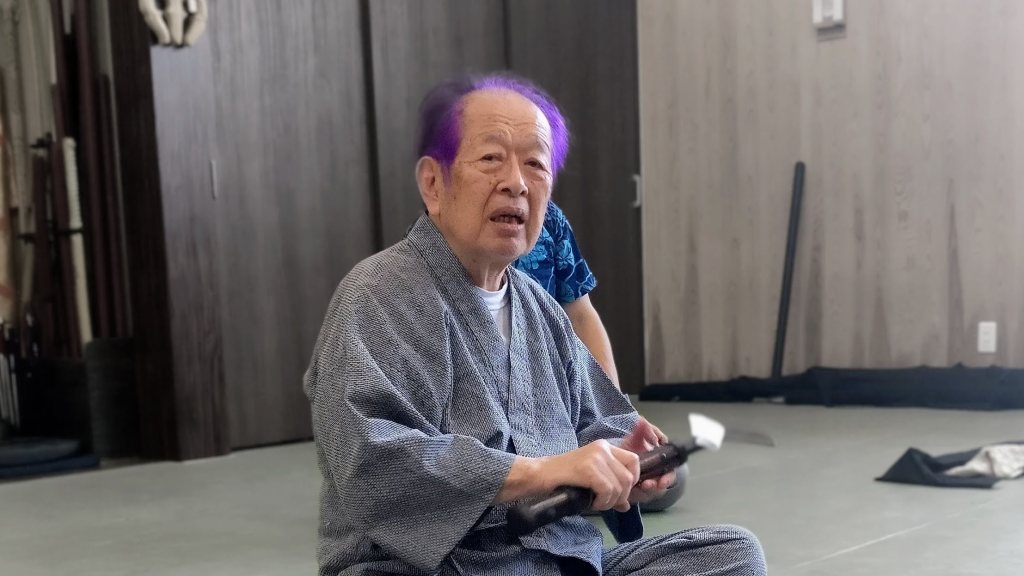
A few months ago, Sebastian from Brazil came to train in Paris for a week. We had fun on the mats and outside and discussed a lot. Pedagogy in the dōjō was one topic. At one point, Sebastian coined “Andragogy” or “pedagogy for adults.” I didn’t know the term. After reading about it, I would like to share my thoughts here. (1)
When you create a new dōjō from scratch as a young teacher, beginner students are in their twenties. Two decades later, the same ones are now grown-ups in their forties. They are adults with families and responsibilities. Therefore, you must adapt your way of teaching if you wish adults to keep coming to the training.
To achieve this, you need two things to happen. First, you must see this as necessary; second, you must switch from pedagogy (aimed at kids) to Andragogy (designed for adults). If you don’t, your dōjō will die, or you will become a “Budō guru” claiming to have all the answers, even when you don’t have them.
Andragogy, defined in the 19th century, is a way to turn the science of pedagogy aimed at kids into a set of principles used for the education of adults. In the 80s, Malcolm Knowles listed six items defining how adults react to learning. This system is called Andragogy. (1)
If you have young students and adults, you must teach differently. Use pedagogy for the first ones and develop your skills in Andragogy for the latter group. These items are helpful and should be used in the dōjō when you teach an adult audience. (2)
I’m adapting hereafter the list given by Knowles in his books and giving it a “touch of Budō” for application on the mats:
Need to know: Older students do not receive education like young students. Adult students need to know the reason for learning a waza. As a teacher, you must give them the technique’s origin and sometimes the motivation to learn it. In any ryū, there is a logical order of the waza within each level. Waza #1 leads to Waza #2, which leads to Waza #3. That is why you should never teach the ryūha like a melting pot of techniques but in a logical order. That, too, answers the expected “need to know.”
Foundation: The basics of Taihen (physical try) lead to Kuden (experience). This experimentation process results from long hours of training and failure through “trial and error.” It is how an adult brain gets a strong foundation. Younger minds want magic, and adults demand logic. In the ’90s’ and the ninja boom, it was common to hear teachers explaining that in “ninjutsu, we have to forget the form and rely on the feeling.” To that stupid argument, I say that 1) to forget anything, you must learn it first. That is why we need a solid technical and historical foundation. Only a solid foundation will give the adult the necessary answers to improve his knowledge.
Self-concept: You must be careful with adult students. They “need to be responsible for their education decisions.” They want to see where they are going and when they will reach foreseeable milestones. They must also have a system of evaluation to follow their progress. For this reason, in Paris, we have developed a syllabus where each student validates their progress. When they think they are ready, they ask the instructor to take the test. That changes dramatically the state of mind during the examination process. We designed the KEEP in 2005. Since then, no one failed the test. (3)
In part 2 of this post, we will cover the remaining three out of six defined by Knowles. But I hope you already understand why teaching adults differs from teaching kids. The same content will have to make sense to them. They have a life, and we established earlier they demand logic, not magic or mystical stuff. Teachers have a responsibility toward their students. What they teach is a way of life, not a sport. If you want to teach adults properly, then it is time to try Andragogy.
(part 2 is coming soon. It will cover the last three items of Knowles: Readiness, Orientation, and Motivation )
_____________________________________
1 Andragogy refers to methods and principles used in adult education. The word comes from the Greek ἀνδρ- (andr-), meaning “man”, and ἀγωγός (agogos), meaning “leader of”. Therefore, Andragogy means “leading men”, whereas “pedagogy” literally means “leading children.”
https://en.wikipedia.org/wiki/Andragogy#:~:text=Andragogy%20refers%20to%20methods%20and,%2C%20meaning%20%22leader%20of%22.
2 https://en.wikipedia.org/wiki/Malcolm_Knowles
3 K.E.E.P.: The Kyū Examination Evaluation Program regroups all the techniques from the Tenchijin plus the basics of the primary weapons we use in the Bujinkan. The whole syllabus is not made of 9 Kyū but of 9 modules. There are three levels of basics (commonly referred to as 9th to 7th Kyū), three Taijutsu modules, and four Buki waza modules.
I don’t believe in classes per rank. In Japan, everyone is training with everyone, and this is the same in my dōjō. In a class today, it is common to have beginners doing techniques with a Shidōshi or Dai Shihan. If you want to keep adults training together despite their different levels, you must do that. Whatever module we study, a beginner and an advanced student can learn something new. Psychologically, a high rank is not training the 8th kyū program but more profound ways to develop his taijutsu. You can download the Tenchijin chart and the K.E.E.P. manual at http://www.koimartartart.com in the “Bujinkan library” section.

Also look out for Salutogenesis. There, Antonovsky stated 3 prerequisites for health. First is understanding, second is the own capacity to act and third is a meaning to ownself. It is quite comparable to what you wrote.
LikeLike
Thank you, I will. 🧸
LikeLike